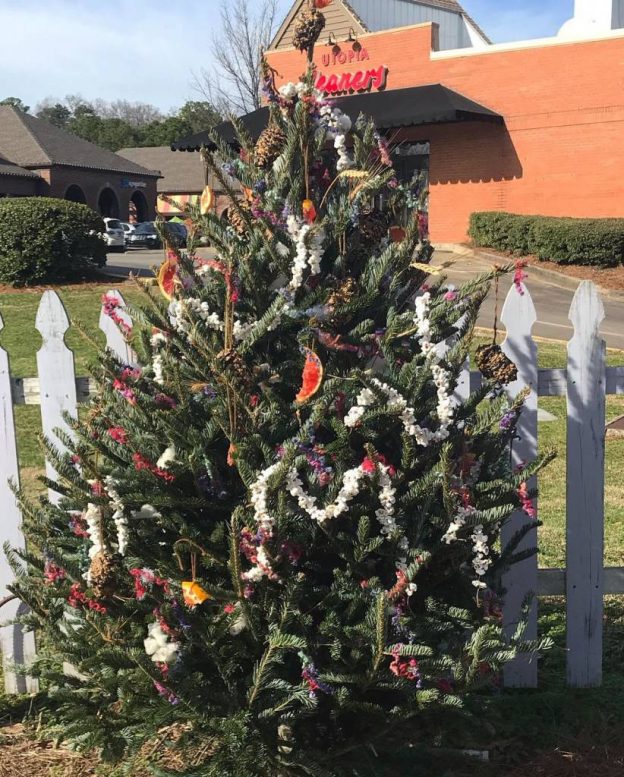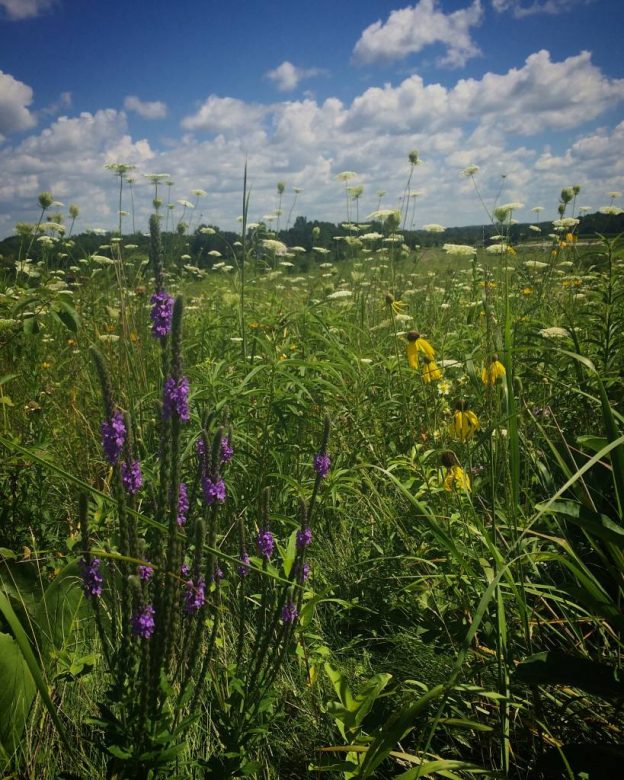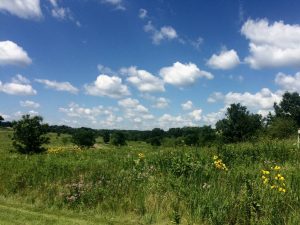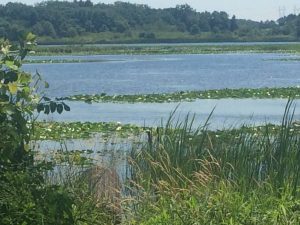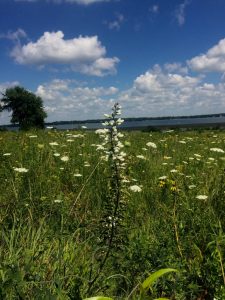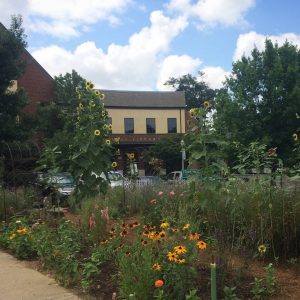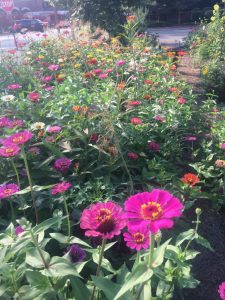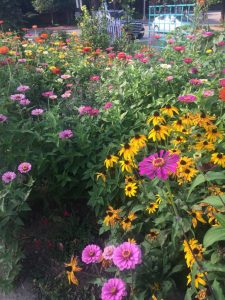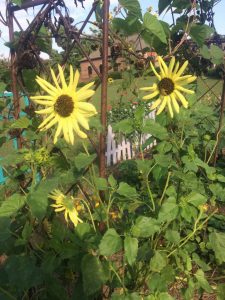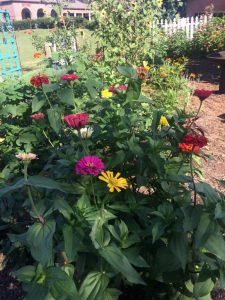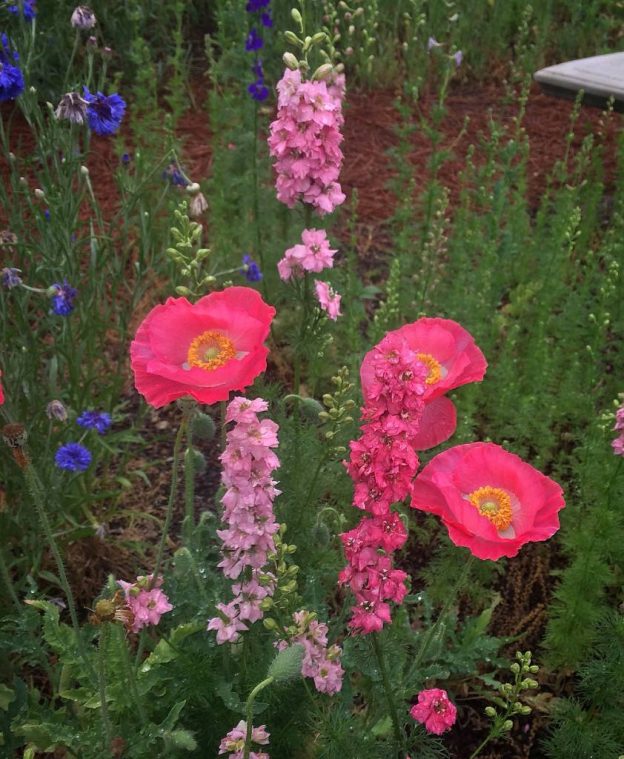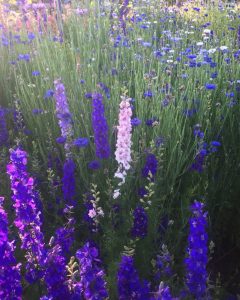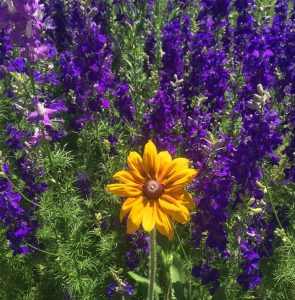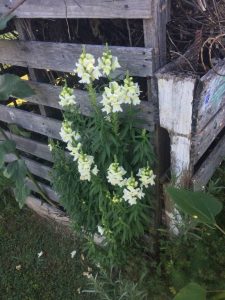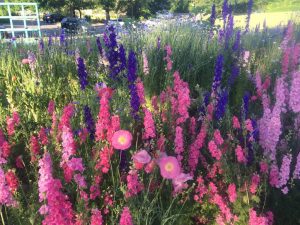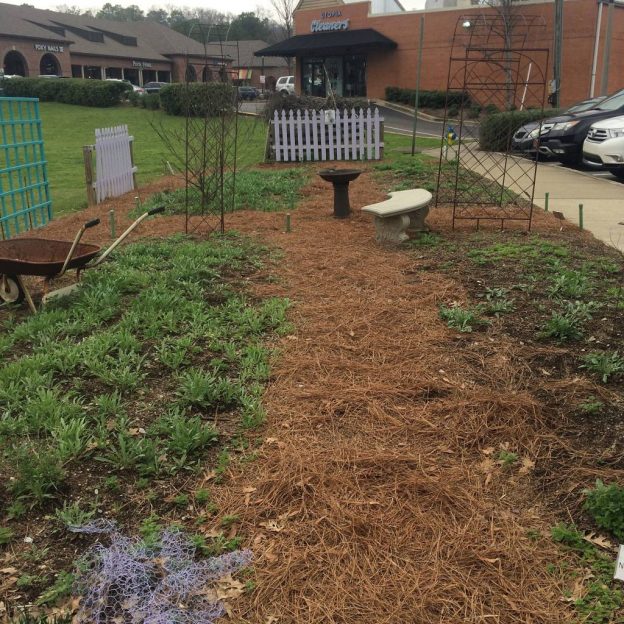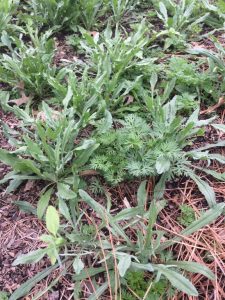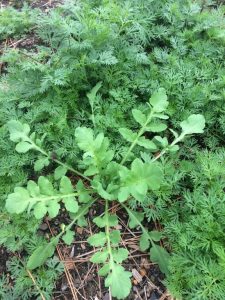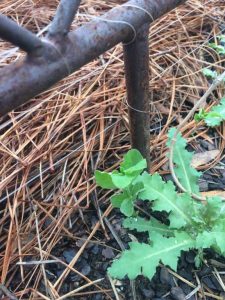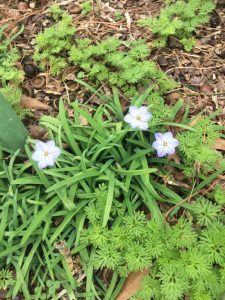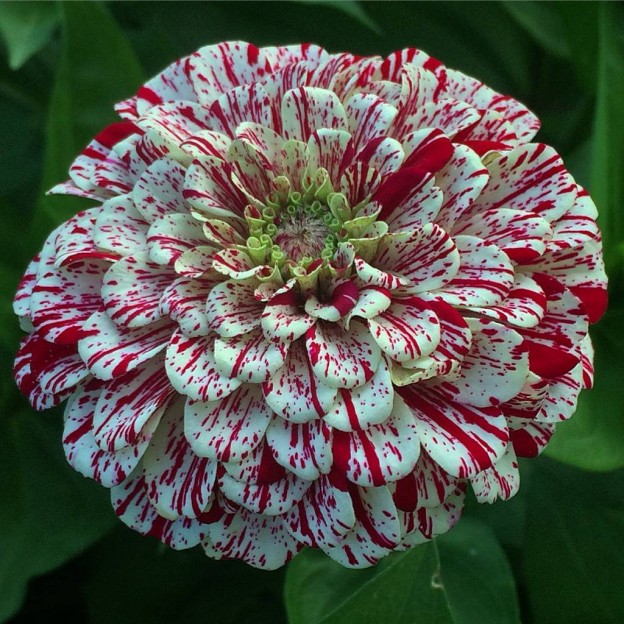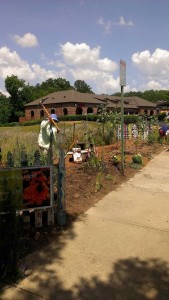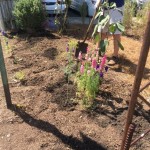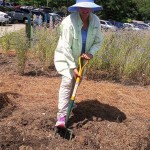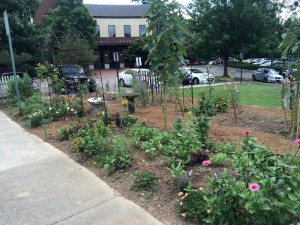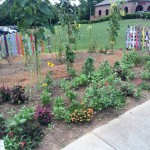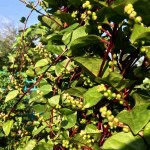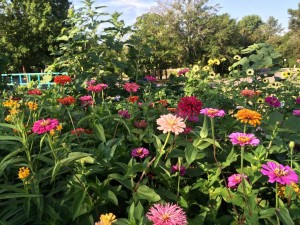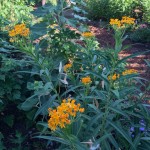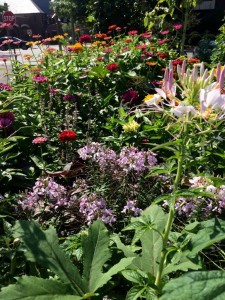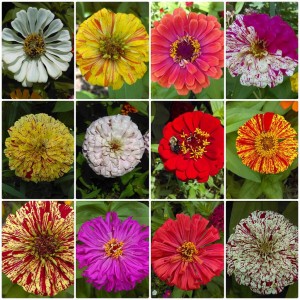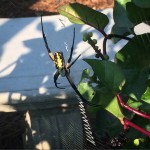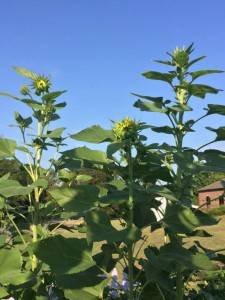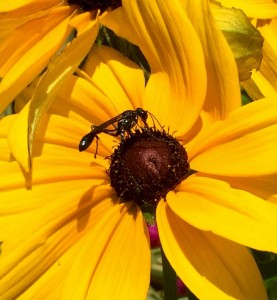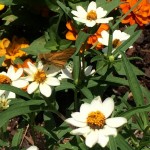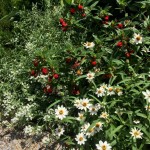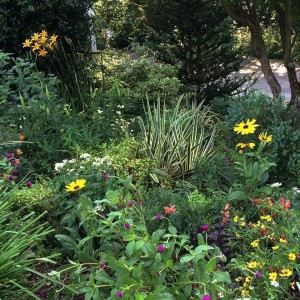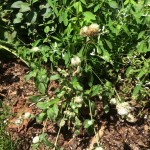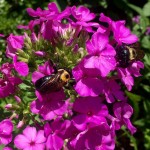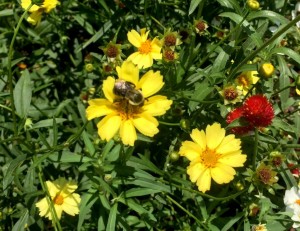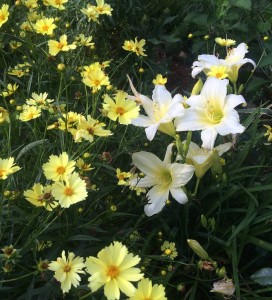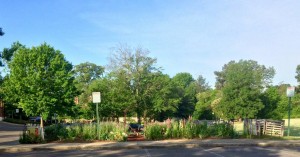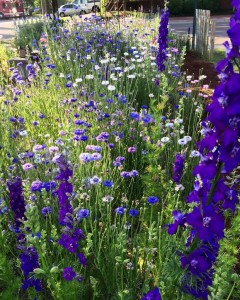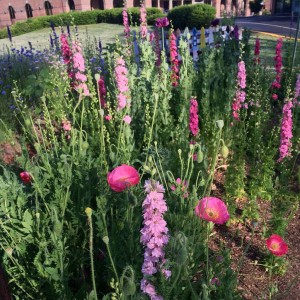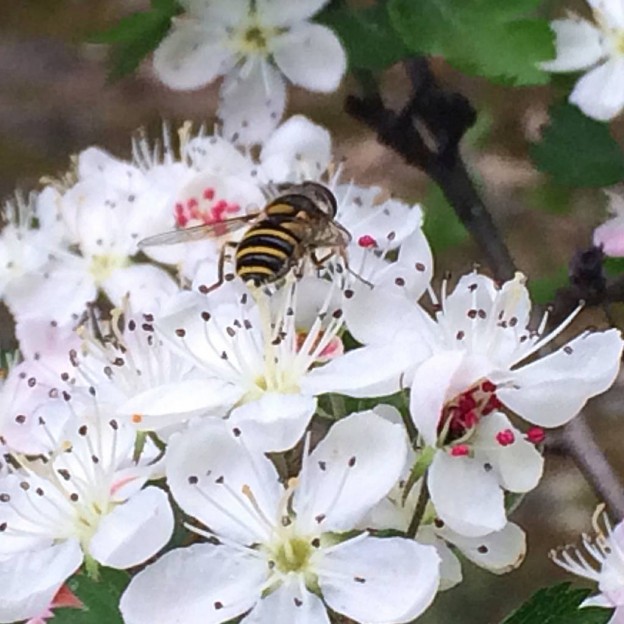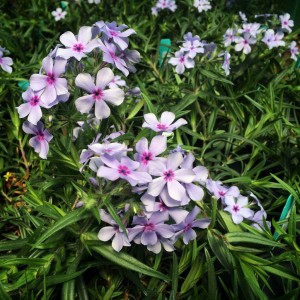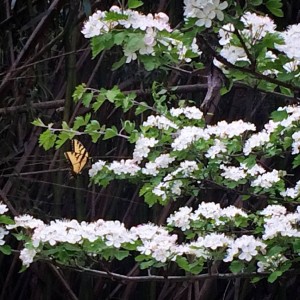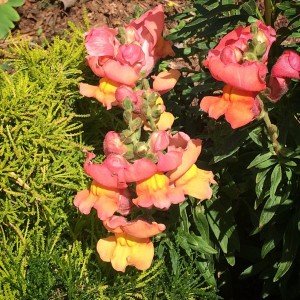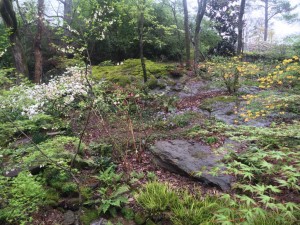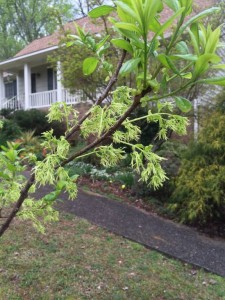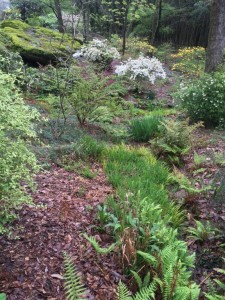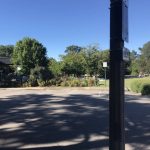 As usual, the ‘Better Late than Never’ pollinator garden received very little attention through the holiday season, other than a much needed clean up that included cutting all the dead vines off the two arbors, pulling out spent summer annuals, and giving it a good raking.
As usual, the ‘Better Late than Never’ pollinator garden received very little attention through the holiday season, other than a much needed clean up that included cutting all the dead vines off the two arbors, pulling out spent summer annuals, and giving it a good raking.
It’s been a sleepy little garden since then, though the winter seedlings of larkspur and some bachelor buttons have appeared – along with more than a few weeds. I’ve only seen a few poppies; I hope they’re just slow to come up this year.
January days at the shop are also filled with mundane tasks – cleaning, completing inventory, and, just like everyone, trying to get rid of the last of the Christmas tree needles that never seem to all quite go away.
In fact, we still had one very large Christmas tree to be disposed of after Christmas. It lay on its side in the nursery, a sad leftover from the holiday season. What a shame it was never decorated or showed off pretty wrapped gifts under its branches, I thought. Contemplating this, I eyed the tree. Then it occurred to me that I could use it in the little garden across the street.
Yes, I’d decorate it for the birds. It would have a purpose, and I’d feel better about the whole situation. Enlisting Bert’s help to cut the top out of the 9’ tree I ended up with about a 6’ section that he put up on a tree stand for me. It was perfect!
The next day I strung popcorn on raffia, took apart an old scarf I never wore so the yarn could be used for nesting material, and made a list of things to buy for the tree or use from the shop.
There were pinecones that I tied yarn around to hang, smeared with peanut butter, and rolled in bird seed. How many of you did that as a kid and have long forgotten about it? It’s just as messy as I remember…thank goodness for latex gloves!
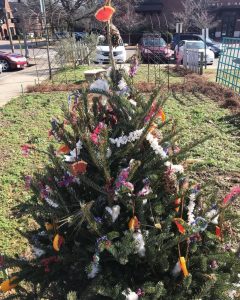 Yarn threaded through cut up pieces of orange slices added more color to the little tree, and pieces of cotton from an old wreath added fluff for their nests. I worked on it all morning at the nursery, then when it was finished Alyson and I loaded it onto the cart and rolled it to its place of honor in the garden.
Yarn threaded through cut up pieces of orange slices added more color to the little tree, and pieces of cotton from an old wreath added fluff for their nests. I worked on it all morning at the nursery, then when it was finished Alyson and I loaded it onto the cart and rolled it to its place of honor in the garden.
I stood there surveying the little tree standing in front of the white fencing, hoping the birds would make their way back to our bare winter garden and discover my gift to them. How nice it would be if the community would add to the little tree too, I thought.
With this in mind I walked across the street to the library and then on to the Chamber of Commerce, asking them to spread the word about the Christmas tree with a new life in the ‘Better Late Than Never’ pollinator garden and that anyone was welcome to participate.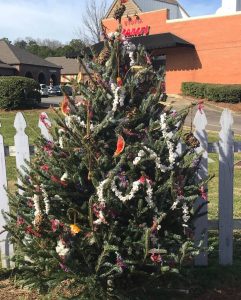
I’m tickled with our repurposed tree for the birds in the little pollinator garden on the corner and hope you like it too. If you’re walking by, take a minute to admire the Christmas tree that became something even better, the symbol of a good and hopeful way to begin the new year. Just maybe you’ll see some happy feathered friends, too.
By Kris Blevons

